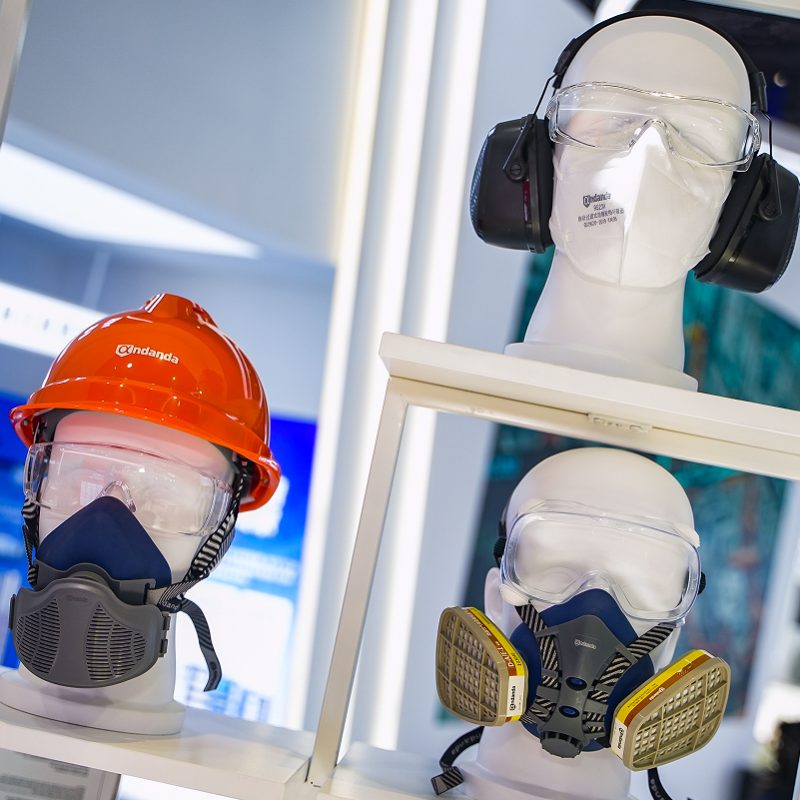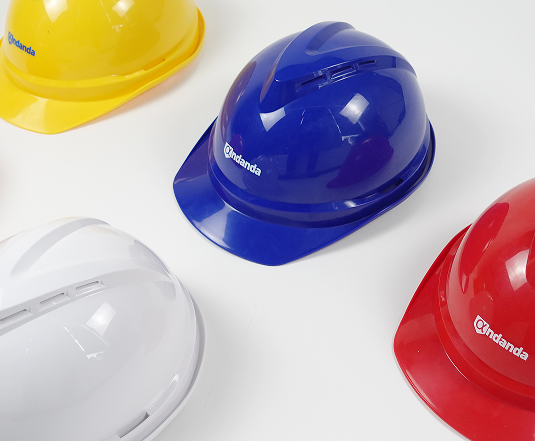Head Protective Equipment: Your Head’s Best Defense
Safeguarding your head ranks among the most pivotal steps you can take for your safety. No other part of your body is as susceptible, and none possesses greater potential for severe injury. Your head is the epicenter of your thoughts, sensations, vision, hearing, and olfaction – where all your senses converge.
Your sense of sight is your sentinel, anticipating what lies ahead when you cross a street or surveying the terrain atop a flight of stairs before taking your next step. Hearing becomes your vigilant guardian, alerting you to potential hazards like an approaching vehicle as you walk down the street or an explosion amidst battle. Your sense of smell acts as an early warning system, detecting smoke in the air or spoiled food in a refrigerator, enabling prompt action to prevent harm.
In contact sports, the head assumes unparalleled vulnerability. A staggering 30% of all injuries incurred in contact sports involve the head and face, with concussion, lacerations, contusions, and fractures being the most prevalent. Athletes engaged in such activities have access to an array of head protection equipment, including helmets (both football and non-football), face masks, and mouth guards. The usage of protective gear is emphatically endorsed by sports medicine professionals, as it substantially diminishes the frequency and severity of head injuries, serving as a pivotal shield in the realm of sports safety.

Varieties of Head Protective Gear
– Helmets
Helmets, notably indispensable in biking, stand out as one of the most pivotal pieces of equipment you can possess. Their significance lies in the protection they offer to your head, serving as a crucial safeguard against grave injuries in the event of an accident.
– Hard Hats
Hard hats claim the spotlight as the predominant form of protective headgear in the realms of construction and manufacturing. Fashioned from sturdy materials like plastic or fiberglass, these hats act as formidable shields against impacts. Designed to distribute force across a broad surface area, hard hats provide comprehensive protection, regardless of the angle of impact. Their lightweight, comfortable design renders them ideal for diverse working environments.
– Bump Caps
Bump caps come into play when safeguarding the front of your head is paramount. Comprising soft foam and featuring an elastic band that secures them under your chin, bump caps are typically worn atop a hard hat. They offer supplementary protection to your forehead, ears, and the rear of your head, sometimes known as hard hats with padding or padded helmets.
– Welding Helmets
For those working with scorching metal, welding helmets emerge as indispensable. These helmets are meticulously crafted to filter out harmful ultraviolet (UV) rays, shielding your eyes from potential burns and averting issues like cataracts and other eye-related complications. Additionally, welders’ helmets incorporate side shields to safeguard your face and neck from splashes of molten metal.
Selecting the Appropriate Head Protection
Evaluating the Risk
The level of head protection needed is intrinsically tied to the likelihood of a head injury occurrence. For instance, when driving a car, the risk of an accident is relatively low. However, if you find yourself riding a motorcycle or operating heavy machinery in a bustling construction zone, the risk escalates significantly.
Furthermore, the severity of a potential injury hinges on the absence of protection. Predicting the exact severity remains challenging due to numerous variables such as the point of impact, the force of impact, and the quality of personal protective equipment, like helmets.
Ensuring Proper Sizing and Fit
Initiating the quest for the ideal headgear begins with selecting the appropriate size. A well-fitted helmet should rest securely atop your head, devoid of any wobbling or rocking. It should maintain a level orientation, encompassing most of your forehead, with the front edge positioned no more than one inch above your eyebrows.
Wearing a hat or visor underneath the helmet should be effortless, with no interference from the headgear. Additionally, if you have long hair, it is imperative to tuck it inside the helmet before donning it, as lengthy locks can become entangled in the chin strap. Lastly, ensure that you can comfortably wear eyeglasses or sunglasses beneath your helmet, seamlessly merging protection and comfort.
Maintenance and Care Guidelines
– Inspection
The paramount method of caring for your helmet is through a thorough inspection before each use. For hard-shell helmets, meticulously check for any cracks or chips in the shell’s surface. In the case of soft-shell helmets, ensure that there are no rips or tears in the padding.
– Cleaning
Regular cleaning is vital to keeping your protective gear sanitary and fully operational. When cleaning your helmet or hard hat, employ warm water and mild soap to effectively remove any accumulated dirt or grime from the equipment’s surface. It’s equally important to pay attention to the straps, which also require regular cleaning.
– Storage
When not in use, store your head protective equipment in a cool, dry location. Avoid placing it near heaters or radiators, where temperatures can exceed freezing point. Furthermore, refrain from storing it in direct sunlight for extended periods, as prolonged exposure to UV rays may lead to damage to plastic components over time.
What we help in Construction, Chemical industry, Machinery manufacturing:
High-end hard V-type ABS safety helmet
1) Adjustable Safety Helmets For More Safety And Protection
Constructed from top-quality ABS materials, our product boasts exceptional impact resistance. With a single finger button, you can effortlessly and conveniently adjust the headband’s size to your preference.

2) New Sweat Resistant & Anti-Odor Belts
Experience an upgrade in comfort with our new, clean, and sweat-resistant fabric belt that also combats odors effectively. For optimal ventilation, we’ve incorporated three strategically placed air holes, ensuring a dry and breathable feel.
3) 8-Point Harness & Y-Shaped Chin Strap For A Safe And Comfortable Experience
The eight-point harness serves to efficiently distribute external impact forces, reducing pressure on the head. Our Y-shaped chin strap not only conforms to human ergonomics but is also user-friendly, aligning perfectly with the product’s structural design.
CONCLUSION
In summary, head protective equipment transcends mere compliance or convenience; it holds profound significance. It represents our collective acknowledgment of the responsibility to safeguard our most vital organ—the brain. It embodies our unwavering commitment to creating safer workplaces, recreational areas, and communities.
As we progress, let us firmly grasp that safety is non-negotiable, and head protective equipment remains an indispensable aspect of our lives. Whether in the workplace or during leisure, in demanding environments or everyday endeavors, let us persist in prioritizing our safety, understanding that head protective equipment stands as, and will forever be, the ultimate guardian of our heads and well-being.